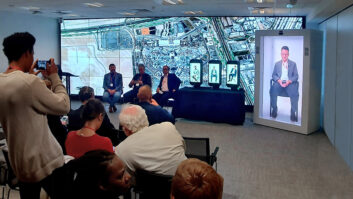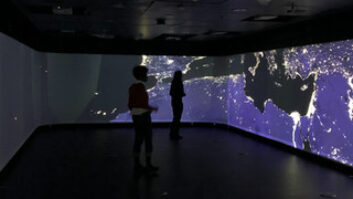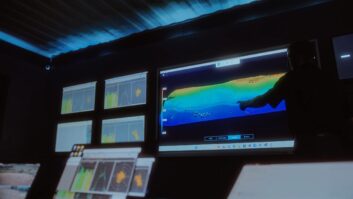
The use of 3D in the classroom has a significant positive effect on children’s learning and attentiveness, according to the most extensive study carried out to date in Europe.
The study, headed by Prof Anne Bamford (pictured) of the University of Arts, London and the International Research Agency, compared the experience of classes in volunteer schools in seven countries using 3D learning materials with classes in the same schools who were taught the same topics using traditional 2D methods – including whiteboards and books. Corresponding lessons were structured identically within each school, with the exception of the 3D material.
Children’s knowledge of the subject was tested before and after teaching. On average, 86% of pupils in the 3D classes registered an improvement between the pre- and post-test, compared with 52% of those in the 2D classes. The average improvement was higher also: those in the 3D classes improved by 17% on average, compared with 8% in the 2D class. In addition, attentiveness was measured during the classes at five-minute intervals; in the 3D classes, 92% of children were attentive during the 3D classes, compared with 46% in 2D. Significantly, 3D pupils remained engaged through the rest of the lesson, after the 3D element had finished.
Bamford said: “Across all of the schools involved in the study, 3D shortened the time it took for students to learn concepts, increased their attention span and resulted in overall deeper thinking from the students. The findings indicate that 3D projection should be considered now and into the future when looking for ways to improve students’ learning and engagement.”
Some children reported a change in the teacher’s demeanour during 3D classes – with a number saying that the teacher became “nicer”. One possible explanation for this is that 3D allows the teacher to sit with the students rather than facing them at the front of the classroom.
A total of 740 students in 15 schools in seven countries – France, Germany, Italy, Netherlands, Sweden, Turkey and the UK – took part in the study, which was supported by DLP. Care was taken to include a diverse mix of schools, including different levels of performance and different settings (urban and rural). The subjects studied were science-related, and the study took place over a six- to eight-week period. The children involved, who were aged 10-13, had wide experience of technology: 90% had seen a 3D film, 85% owned at least one mobile phone and 75% owned handheld games. Teachers interviewed in the study acknowledged the importance of high-quality technology in the education of these ‘digital natives’, who are growing up immersed in technology and have strongly positive attitudes towards it.
The results were presented at an event in London in late September, hosted by the Company of Educators, where Prof Bamford was joined by Kathryn Macaulay, deputy head, operations and communications, at the Abbey School, Reading – one of the schools in the study. She made the point that any technology in a school environment should fit into a structured learning environment. She said: “Technology should not drive what we are doing… It is not about the fact we are using a technology; we are presenting content in a way that young people really understand, accept and are willing to move on with.”
A video shown at the event highlighted the very different results that can come from teaching with 3D versus 2D. After being taught the structure of a plant cell, pupils from one UK school were asked to make a model of a cell “as it would be in life”. Without exception, the 2D class made 2D models – generally sticking materials onto pieces of paper – while the 3D class made 3D models, for instance out of modelling clay. See the latest issue of Installation Europe for an interview with Prof Anne Bamford www.dlp.com/3d







